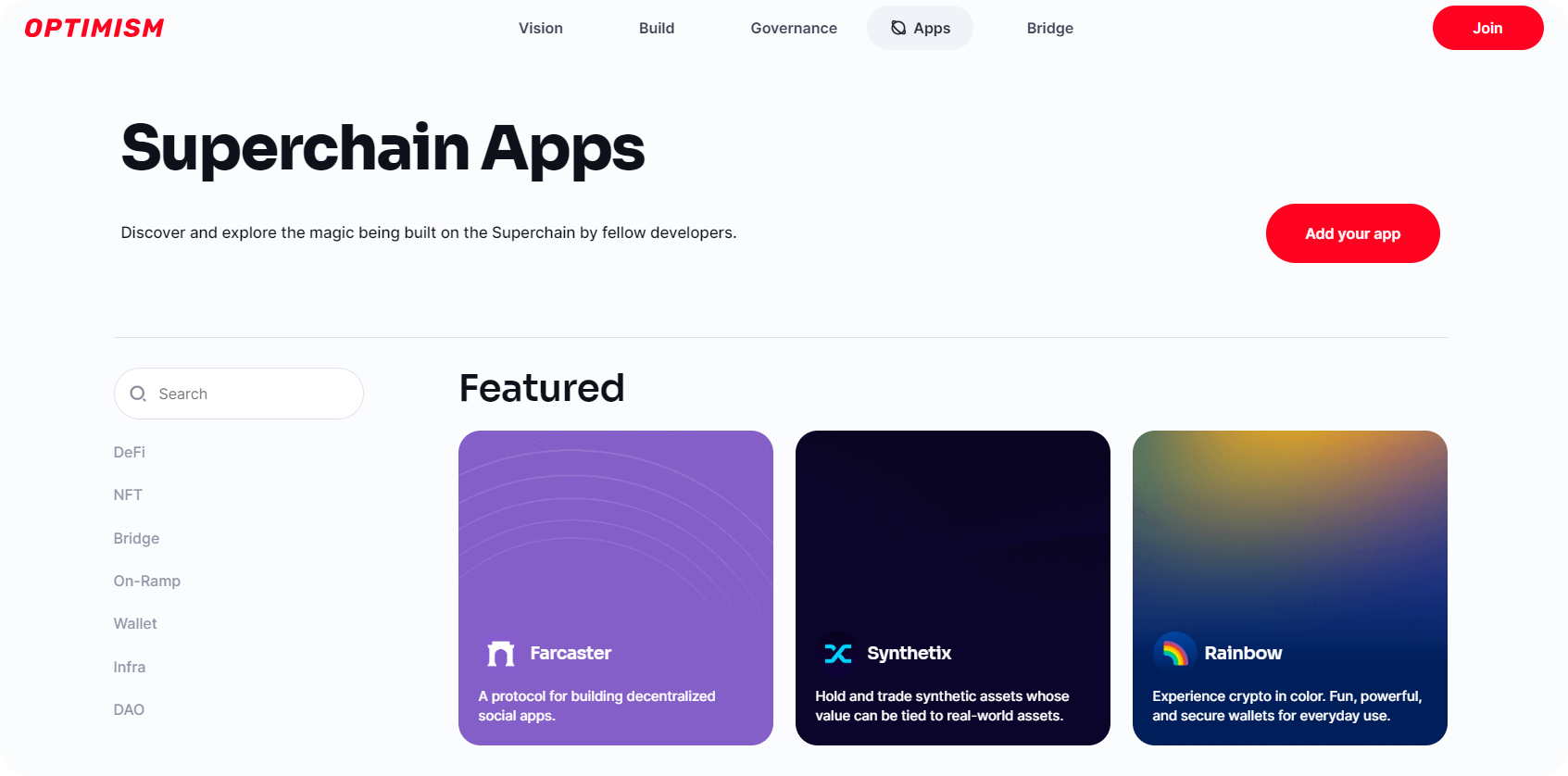Optimism is a leading Layer 2 (L2) solution designed to enhance Ethereum's scalability and reduce transaction costs.
Built according to an optimistic rollup architecture, it leverages the security of Ethereum while providing a more efficient environment for transactions. In this guide, we'll explore the basics of Optimism, how it works, and some key projects within its ecosystem.
Key takeaways
- Optimism is an L2 scaling solution that uses optimistic rollups to improve Ethereum's scalability.
- It relies on the security of Ethereum (Layer 1) while offering faster and cheaper transactions on its external execution layer.
- Optimism's design is powered by the OP Stack, a modular, open-source development stack for building L2s.
- Optimism's introduction of the Superchain ecosystem aims to create a network of interconnected L2s for enhanced interoperability and scalability.
What is Optimism?

Optimism has its own bespoke Ethereum L2, but it's also become a chain of chains. The key pillars of Optimism's approach include:
- OP Mainnet: This is the main L2 at the heart of the Optimism community. It is equivalent with the Ethereum Virtual Machine (EVM), making it easy to port code over from Ethereum or to develop on OP Mainnet as if you were building directly on Ethereum.
- OP Stack: This is the modular, open-source stack that offers a streamlined experience for creating and managing custom L2 blockchains. Some of the most notable OP Stack chains today include Base, Fraxtal, and Zora Network.
- The Superchain: This is the network of interconnected L2 chains built on the OP Stack. It allows multiple chains to share security, communication layers, and a common development framework.
How does Optimism work?
Optimism's OP Mainnet and OP Stack chains operate by processing transactions offchain, i.e. outside Ethereum, and then periodically submitting batches of these transactions back to Ethereum. This process is enabled by several components:
- Sequencer: This system collects and orders transactions offchain.
- Rollup Nodes: These entities validates the sequencer's work and ensure data availability.
- Fault Proofs: These safety mechanisms are used to challenge invalid transactions, ensuring the integrity of the rollup(s).
As for the OP Stack, it has its own vital components. These pillars include:
- Data Availability Layer: This segment ensures that the data required to validate transactions is accessible.
- Sequencing Layer: This segment is responsible for the ordering and inclusion of transactions.
- Derivation Layer: This segment processes raw data to create the inputs for the execution layer.
- Execution Layer: This segment handles the actual computation and state changes of the network(s).
Why Optimism?
Optimism offers a premier Ethereum L2 experience with OP Mainnet, and its modular OP Stack empowers developers to create custom L2 networks with ease. This combination of technical excellence, developer-friendly tooling, and its approach to its interconnected Superchain makes Optimism a crucial player for both the present and the future of decentralized apps.
How to invest in Optimism?
The native token of the Optimism ecosystem is OP. At the time of this guide's latest update, OP was trading around $1.46 per token with a market capitalization of approximately $1.6 billion.
OP can be purchased or sold on various cryptocurrency exchanges, including large centralized exchanges like Coinbase or Kraken as well as decentralized exchanges like Uniswap.
Besides its financial speculation potential, OP has a governance role within the Optimism Collective, a digital democratic governance experiment that’s responsible for stewarding the Optimism ecosystem via two houses, the Token House and the Citizens’ House. The Token House is specifically managed by OP token holders and is responsible for voting on project incentives and protocol upgrades.
Top Optimism projects

The Optimism app ecosystem has over 260 apps and counting. Some of the top projects to try here currently include:
- 👻 Aave – a DeFi borrowing and lending protocol
- 🌉 Across – an L2 bridging solution
- 📱 Farcaster – a decentralized social network built on Ethereum and Optimism
- 🏆 JokeRace – a platform for creating onchain contests
- ➿ Kwenta – a platform for trading derivatives onchain
- 🎨 NiftyKit – a no-code platform for creating NFTs
- 💰 PoolTogether – a no-loss prize savings protocol
- ⏫ Sablier – a token distribution and money streaming platform
- 🪙 Synthetix – a permissionless platform for creating onchain derivatives
- 🚴 Velodrome – an automatic market maker (AMM) designed for deep liquidity
More about Optimism
👉 Bankless Optimism Profile
👉 Hunt Airdrops on Optimism
👉 Base Overtakes OP Mainnet in TVL
